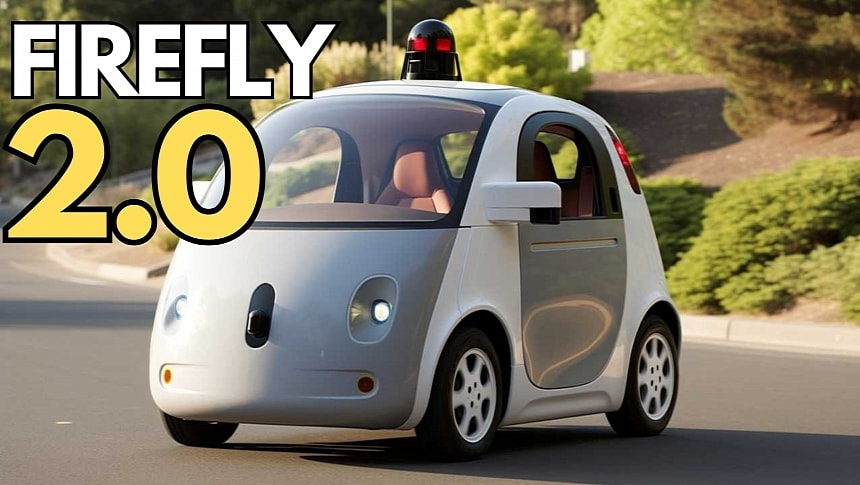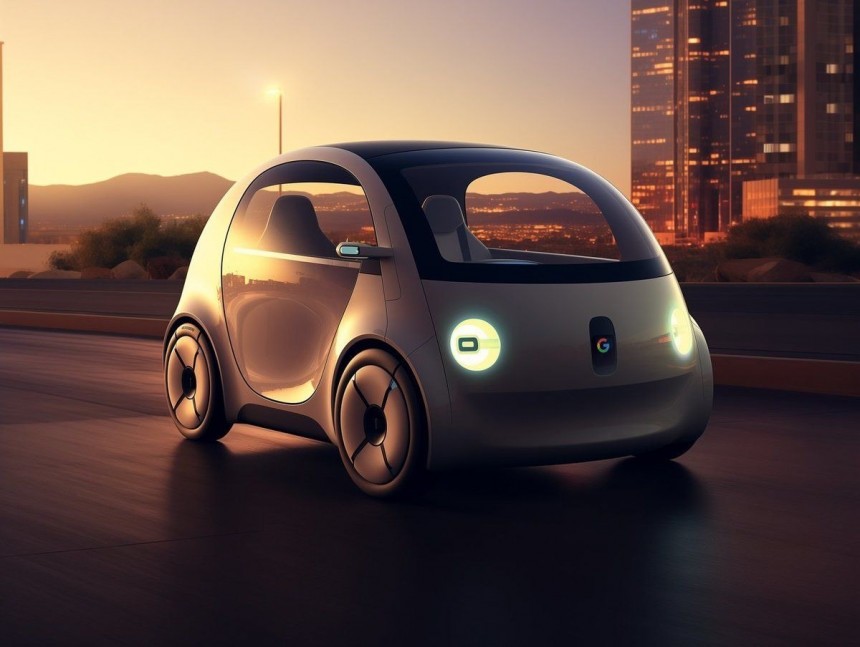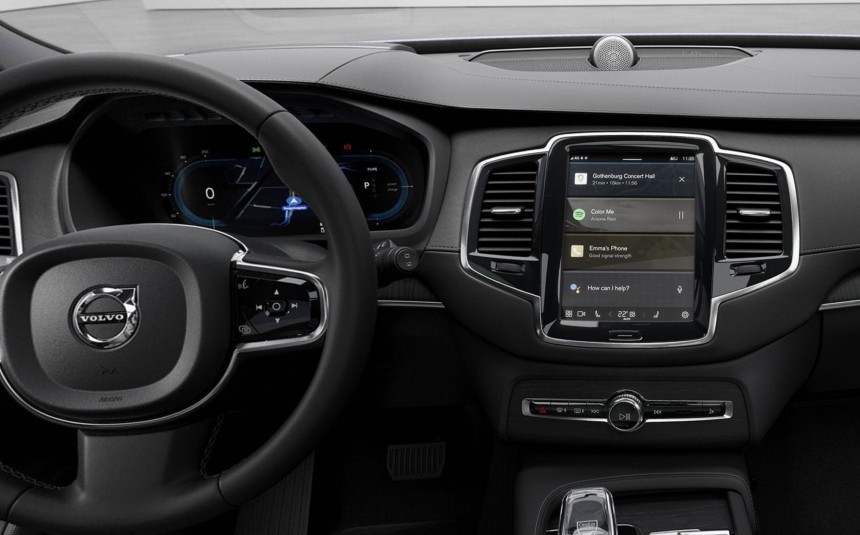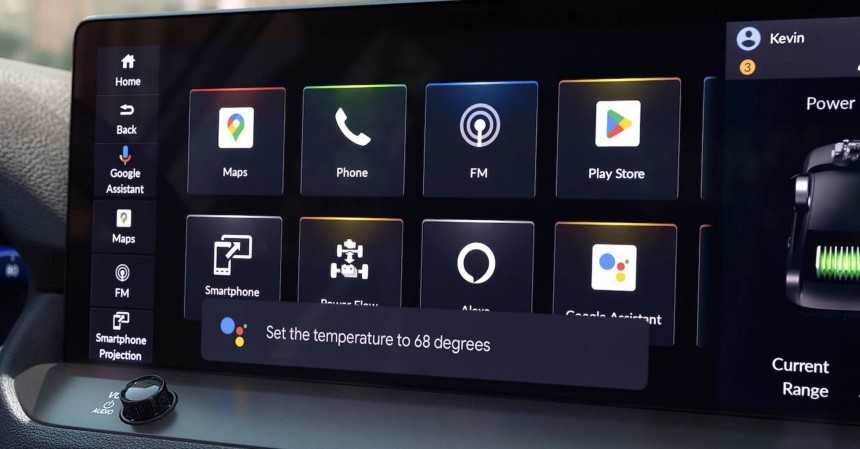Google's automotive strategy doesn't seem to include a vehicle, as the search giant has a different plan to expand in this unexplored market. Its efforts come down to software and services that would make Google's products almost irreplaceable for drivers, especially if they're part of the Android ecosystem.
However, with some tech companies working on full cars, including Xiaomi and Apple, many believe it's time for Google to begin a similar project, too.
While few people remember, building a car from scratch wouldn't necessarily be an impossible mission for Google. The company already did it with a project codenamed Firefly (eventually abandoned in 2015), and reigniting the project is seen by artificial intelligence as a way to become an important player in the automotive space.
Leasing Options conducted an experiment that provides us with a closer look at the potential foray of all tech giants in the car world.
They asked artificial intelligence to envision cars built by the largest tech companies, and in Google's case, the result isn't at all surprising.
The proposed design looks like a modernized version of the original Firefly. With enough room for only two occupants, the Google Car would be almost exclusively focused on urban mobility.
It sports modern equipment, such as cameras instead of side mirrors, LED headlights, and a prominent Google logo that likely hides the charging port.
Firefly 2.0 would be an electric car, likely with reduced autonomy, as its design wouldn't allow for large batteries. However, considering its main purpose would be the typical daily commute to and from work, a Google Firefly car would probably have its own customer base excited with the prospect of not having to search for parking spots for too long.
While Google doesn't look interested in building a car, the company already has an ambitious plan to expand in the automotive world.
The strategy comes down to three products: Android Auto, Android Automotive, and Google Automotive Services.
Android Auto is the widely adoption solution today, coming as an alternative to CarPlay and allowing users to remain connected to the Android ecosystem with a smartphone plugged into the car.
Vehicles with Android Auto support allow users to pair their phones with infotainment systems and get a car-optimized interface with easy access to essential applications, including Google Maps, Waze, and Spotify. Android Auto also comes with Google Assistant integration, letting users interact with apps without touch input.
However, the main Android Auto shortcoming is the limited vehicle integration. Because the experience is powered by a smartphone, Android Auto can't ready vehicle data, such as battery information and range. Google Assistant also can't control vehicle functions, such as the air conditioning, so the experience is limited to the applications installed and running on the mobile phone.
Android Automotive is the evolved version of Android Auto. It's an embedded operating system that automakers can install in their cars from the factory to power the infotainment capabilities behind the wheel.
Compared to Android Auto, Android Automotive doesn't require a mobile device to run, as the operating system is installed and runs on the media receiver. A Google account offers one-tap access to data already available in Google Maps and other Google applications. The search giant has already expanded the app ecosystem on Android Automotive with Google Chrome, so drivers can now browse the web from the infotainment screen when the car is parked.
Android Automotive can also support Android Auto if the carmaker enables the feature. It means a car fitted with Android Automotive can also offer Android Auto. A car with Android Auto support can't be upgraded to Android Automotive because the operating system requires special hardware and can only be installed from the factory.
Google Automotive Services is Google's suite of services specifically aimed at carmakers interested in Android Automotive. The suite includes essential services like Google Maps and allows Android Automotive cars to provide drivers with a complete solution out of the box.
Car manufacturers can adopt Android Automotive without GAS. The option comes in handy to companies that don't want to provide Google with access to vehicle data, though they must find alternative products for Google's services included in the suite. Some carmakers, including
While few people remember, building a car from scratch wouldn't necessarily be an impossible mission for Google. The company already did it with a project codenamed Firefly (eventually abandoned in 2015), and reigniting the project is seen by artificial intelligence as a way to become an important player in the automotive space.
Leasing Options conducted an experiment that provides us with a closer look at the potential foray of all tech giants in the car world.
They asked artificial intelligence to envision cars built by the largest tech companies, and in Google's case, the result isn't at all surprising.
The Google Car.
It sports modern equipment, such as cameras instead of side mirrors, LED headlights, and a prominent Google logo that likely hides the charging port.
Firefly 2.0 would be an electric car, likely with reduced autonomy, as its design wouldn't allow for large batteries. However, considering its main purpose would be the typical daily commute to and from work, a Google Firefly car would probably have its own customer base excited with the prospect of not having to search for parking spots for too long.
Google's automotive strategy.
The strategy comes down to three products: Android Auto, Android Automotive, and Google Automotive Services.
Android Auto is the widely adoption solution today, coming as an alternative to CarPlay and allowing users to remain connected to the Android ecosystem with a smartphone plugged into the car.
Vehicles with Android Auto support allow users to pair their phones with infotainment systems and get a car-optimized interface with easy access to essential applications, including Google Maps, Waze, and Spotify. Android Auto also comes with Google Assistant integration, letting users interact with apps without touch input.
However, the main Android Auto shortcoming is the limited vehicle integration. Because the experience is powered by a smartphone, Android Auto can't ready vehicle data, such as battery information and range. Google Assistant also can't control vehicle functions, such as the air conditioning, so the experience is limited to the applications installed and running on the mobile phone.
Android Automotive is the evolved version of Android Auto. It's an embedded operating system that automakers can install in their cars from the factory to power the infotainment capabilities behind the wheel.
Compared to Android Auto, Android Automotive doesn't require a mobile device to run, as the operating system is installed and runs on the media receiver. A Google account offers one-tap access to data already available in Google Maps and other Google applications. The search giant has already expanded the app ecosystem on Android Automotive with Google Chrome, so drivers can now browse the web from the infotainment screen when the car is parked.
Google Automotive Services is Google's suite of services specifically aimed at carmakers interested in Android Automotive. The suite includes essential services like Google Maps and allows Android Automotive cars to provide drivers with a complete solution out of the box.
Car manufacturers can adopt Android Automotive without GAS. The option comes in handy to companies that don't want to provide Google with access to vehicle data, though they must find alternative products for Google's services included in the suite. Some carmakers, including
, adopted Android Automotive without Google Automotive Services and developed or installed third-party alternatives for the Google Play Store and Google Maps specifically to get more control over the content available for drivers and the data that leaves their cars.
The adoption of Android Automotive is still in the early phases, though Google keeps working with carmakers to bring the OS to their models. Four big names have already confirmed plans to install AAOS in their cars starting this year, though some have also expressed interest in other infotainment solutions, including Apple's new-generation CarPlay. Porsche is one of them, as it'll install Android Automotive in certain cars and bring the new CarPlay experience to customers who need it.
The adoption of Android Automotive is still in the early phases, though Google keeps working with carmakers to bring the OS to their models. Four big names have already confirmed plans to install AAOS in their cars starting this year, though some have also expressed interest in other infotainment solutions, including Apple's new-generation CarPlay. Porsche is one of them, as it'll install Android Automotive in certain cars and bring the new CarPlay experience to customers who need it.




















